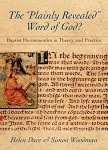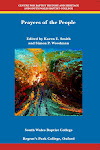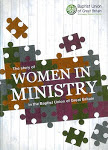From time to time, I lead small groups on tours of the British Museum,
focusing particularly on
artefacts that are relevant to Biblical Studies.
It started many years ago,
when I used to bring groups
down from my university classes in Cardiff,
and I’ve done a few since coming to London,
including a group from our
Tuesday lunch earlier this year.
It’s always good fun,
and there’s a surprisingly
large amount of material in there
that’s relevant to helping
us understand the Bible.
One of the objects I always try and point out is a small baked clay
cylinder,
a bit like a large toilet
roll tube, and covered in tiny writing.
It’s known as the Cyrus Cylinder,
and it’s one of the great
treasures of the Museum.
It was discovered in 1879,
but actually dates from the
6th century BCE,
and spent the intervening millennia buried in the ground in Babylon,
in modern day Iraq.
It returned to the Near East a few years back, in 2012,
on a four month loan to Iran,
and was displayed in Tehran.
During this time, nearly a quarter of a million people came to view it,
and it has been described,
intriguingly,
as “the first charter of human rights”
So what is it that is so special about this little clay object,
that’s about the size of a
bottle of wine?
Well, the cylinder is inscribed in Babylonian cuneiform
with an account by Cyrus,
the king of Persia,
detailing his conquest of Babylon in 539 BC
and of his capture of
Nabonidus, the last Babylonian king.
This takes us right into the final years of the Israelite exile to Babylon,
which begun under king
Nebuchadnezzar in 597 BCE
and ended under Cyrus’s own rule
in 539 BCE.
If you were around for my sermon a few weeks ago
on the Massacre of the
Innocents,
you may remember that we traced the events of the start of the exile,
as first the Assyrians and
then the Babylonians
conquered the country of
Israel.
Well, the Cyrus cylinder takes us to the end of the exile,
and it also takes us right
into the time of the prophet
who wrote text of our Old
Testament reading.
The cylinder is, in effect, something like a cross
between a piece of
propaganda, and a historical document.
It describes the good things that King Cyrus has done
for the inhabitants of Babylon
who he has just conquered.
One of the things it talks about
is how Cyrus has returned a
number of images of foreign gods,
which Nabonidus and other Babylonian kings had collected together in Babylon,
back to their proper temples
in their own countries.
There is a certain irony here,
because the Cyrus cylinder
is itself an object displaced from its land of origin,
and there are those who are
calling for it to be permanently restored to Iran.
And yet it famously contains the story
of how Cyrus returned
revered objects from his time
back to their land of
origin.
The cylinder also tells
how Cyrus arranged for the
restoration of foreign temples,
and of how he organized the
return to their homelands
of a number of
people groups who had been held in exile in Babylonia.
Although the Jews aren’t mentioned by name on the cylinder,
their return to Palestine
following their years of exile in Babylon
was certainly part of this
policy enacted by Cyrus.
One of the fascinating things about the cylinder, is that in it,
Cyrus claims to have
achieved his victory over the Babylonian king
Nabonidus
with the aid of the
Babylonian god, Marduk.
Cyrus, of course, wasn’t Babylonian, he was Persian,
but he claimed that the
Babylonian god Marduk was fighting on his side,
against the Babylonian king.
So here we have a Persian king,
who would have grown up
worshipping gods
drawn from the
pre-Zoroastrian pantheon,
including Mithras
who later became so popular with the Romans.
But when he conquers Babylon,
he claims in the Cyrus
Cylinder that he did it
with the help of
none other than Marduk,
the god of Babylon
itself.
One of the things about the ancient pantheon
was that each tribe, or
country, had their own gods.
So it kind-of makes perfect sense for Cyrus to claim Marduk’s support
when he becomes the ruler of
Babylon,
because his Persian gods are still in Persia,
and if he is to rule in
Babylonia,
he will need to do so with
the approval of the Babylonian god.
By the same token,
there’s not a lot of point keeping
the gods from Mesopotamia in Babylon,
they might as well go back to their own temples
in their countries of origin,
and so Cyrus sends the captured gods back home,
with grants to rebuild their
local temples.
The story of the rebuilding of the Jewish temple
that we find in the book of Ezra
clearly fits into this story
at this point.
But our Old Testament reading for this morning
isn’t from quite that far
into the future.
The Jewish prophet of Isaiah 45
is writing in the final
years of the Israelite exile,
at the time when Cyrus of Persia was growing in strength,
and was starting to pose a
threat
to the previously
unassailable Babylonian empire.
And Isaiah hails Cyrus, not as an agent of the Persian gods,
nor as an agent of Marduk,
but as an agent of
none other than Yahweh himself.
The way Isaiah 45 puts it,
Cyrus is Yahweh’s anointed
one,
he is Yahweh’s
messiah,
coming to bring release and freedom for the people of the Lord,
to overthrow the evil powers
of the Babylonian empire,
to bring release the
captives
so that they can return to
the promised land.
Just as Cyrus claimed Marduk’s support in conquering Babylon,
so Isaiah ascribed Cyrus’s
actions
to his God Yahweh!
You might start to suspect
that history is written by
the winners,
who spin their stories to claim whatever God they can
to justify the outcome of
their endeavours.
But maybe that’s too cynical.
However, this idea that a non-Israelite
might be the servant of
Israel’s God
has found an interesting parallel
in religious responses to
President Trump.
Following Trump’s announcement earlier this year
that the US embassy in
Israel would move from Tel Aviv to Jerusalem,
the Israeli Prime Minister Benjamin Netanyahu remarked,
“I want to tell you that the
Jewish people have a long memory,
so we remember the
proclamation of the great king, Cyrus the Great,
Persian king 2,500
years ago.
He proclaimed that the
Jewish exiles in Babylon
could come back and
rebuild our Temple in Jerusalem.”[1]
Netanyahu’s suggestion that Trump may be compared to Cyrus
because of his specific
policies affecting Israel
gives his analogy a unique
twist.
But American evangelicals have been comparing Trump to Cyrus
since he first started to
stand for the presidency.
They argue that just as Cyrus,
scarcely a devotee of the
God of Israel, served as God’s agent
by authorizing Jewish exiles
in Babylon
to return to the
Promised Land
and to rebuild the
temple,
so the narcissistic and
morally flawed Trump
can advance the
causes of the evangelical community,
and by extension,
the country.
If you are wondering how Christians can overlook Trump’s moral failures
and still support him,
here is a strong theological rationale.
And if you’re wondering how Christians
can offer uncritical support
to the Israeli occupation of Palestine,
here is a strong ideological rationale.
In both these scenarios, as in so much else in public theology,
pragmatism wins and the ends
justifies the means.
But back to the sixth century BCE
One of the implications of Jewish monotheism
was that other gods have no
validity.
Whereas the polytheistic Cyrus
could happily adopt a policy
of when in Babylon,
do as the
Babylonians do,
the Jews didn’t have this
option.
Their perspective was that if good happens, it happens because of Yahweh,
even if those doing the good
think they’re doing it the
name of Marduk.
Now, we might have a conversation
about whether we think God
ever actually wills
warfare and
wholesale destruction,
but that’s a conversation
for another day.
As far as the prophet of Isaiah 45 is concerned,
anything that threatens to
break the stranglehold of Babylon
is unambiguously a
good thing,
and so he welcomes Cyrus as
Yahweh’s anointed.
The proclamation of the Lord as the one and only God,
the one who created the
heavens and the earth,
the one besides whom there
is no other,
leads the prophet to an interesting place, theologically,
which is the recognition
that God is at work beyond Israel,
bringing his purposes to fruition
even through people who do
not yet know him by name.
Earlier this year I participated in one of those Facebook challenges,
of posting the covers of the
ten books
that have had the most
influence on me.
A couple of mine were by C.S. Lewis,
and one was The Last Battle, the apocalypse from the
Narnia series.
In The Last Battle, the follower
of the eagle-headed god Tash,
(a clearly Assyrian deity,
by the way),
finds himself confronted with Aslan.
The Tash worshipper says to Aslan:
‘Alas, Lord, I am no son of thine but a servant of
Tash’
but Aslan answers,
‘Child, all the service thou hast done to Tash,
I
account as service done to me.’
The Tash worshipper continues the story:
‘Then by reason of my great desire for wisdom and
understanding,
I
overcame my fear and questioned the Glorious One and said,
Lord,
is it then true … that thou and Tash are one?
The Lion growled so that the earth shook … and
said, It is false.
Not
because he and I are one, but because we are opposites,
I
take to me the services which thou hast done to him.
For I and he are of such different kinds
that
no service which is vile can be done to me,
and none which is not vile can be done to him.’
Now, this is not unproblematic, because within the world of Narnia,
the Calormenes who worship
Tash
have a strong similarity to a stereotypical caricature
of Arab Muslims in our
world.
The Catholic theologian Paul F Ford has commented that
"C. S. Lewis was a man of his time and
socioeconomic class.
Like many English men of this era, Lewis was
unconsciously
but
regrettably unsympathetic to things and people Middle Eastern.
Thus he sometimes engages in exaggerated
stereotyping
in
contrasting things Narnian and things Calormene.
He intends this in a broadly comic way, almost
vaudevillian.
But
in our post-September 11, 2001, world, he would, I am sure,
want
to reconsider this insensitivity."[2]
Whereas outspoken atheist critic and novelist Philip Pullman
has called the Chronicles of
Narnia "blatantly racist"
So we must tread with care,
because I would not for one
moment want to suggest
that Allah and Yahweh are
opposites.
Quite the opposite in fact;
the objects of worship in
Islam, Judaism, and Christianity
seem to me to have far more
in common than otherwise.
But I would also be avoiding the issue,
if I wrote off the
significance for me as a young Christian
coming to realise that service offered
in the name of a differently
understood and differently named God
might be counted as service by
the God I worshipped.
And, of course, it occurred to me that maybe the corollary is also true;
What if my faithful service
to my God
were similarly welcomed by the God
of those who worship their god differently to me?
Well, this is the insight of Isaiah 45.
The actions of Cyrus
committed in the name of Marduk
are accepted by
Yahweh,
because the Lord of Israel
is the Lord of the whole earth,
and nothing that is
good can be anything other
than
acceptable to him,
regardless of who does it,
or in whose name it
is done.
And so the prophet of Israel proclaims
that God is continually at
work in the world,
overthrowing chaos and bringing order to the land,
just as he called ‘order’ on
the chaos of the deep
when calling creation itself
into being.
The chapter ends with a proclamation to all people,
in all nations, to the ends
of the earth,
that they should turn to the Lord and be saved,
and the prophet has the Lord
himself speak,
in language later echoed by St Paul in his letter to the Romans (14.11):
The Lord says: "To me
every knee shall bow, every tongue shall swear."
For Paul, it’s not Yahweh to whom every knee shall bow:
it’s Jesus Christ himself
who commands the worship of every knee,
the allegiance of every
tongue.
The testimony of the New Testament
is that it is Jesus, not Cyrus,
or any other
modern-day, Cyrus-like figure,
who is the Lord’s anointed,
the messiah sent by God to bring freedom to those in captivity,
and release to those who are
oppressed.
We see this in the story of the wise men coming to worship Jesus.
Wise men from the east, from Persia, from the country of Cyrus.
Probably Zoroastrian
philosophers,
the heirs of the
pantheon worshipped by Cyrus.
And they come to worship Jesus,
led by a system of astrology
very alien to us,
and condemned in
the Old Testament,
yet they come anyway,
and their adoration of the Christ-child is acceptable
and their gifts are received
by mother of God.
And we see the same thing in the story of Paul in the Areopagus in Athens,
who proclaims Jesus as the
one already being worshipped
by the Athenians as their
‘unknown god’.
In fact, we have this story immortalised in this building
in one of our stained glass
windows,
as the founder of the church built into the architecture
a commitment to proclaiming
God
in the midst of a
city where God is at work,
but where many who live
there don’t know it and can’t see it.
Paul says that the worship offered to the unknown god,
by those who also worshipped
the Athenian gods of Rome and Greece,
was, at least as far he was concerned,
acceptable to Jesus.
All of which, I want to suggest,
raises some interesting
questions for those of us
who seek to witness to Jesus Christ
in the midst of a
pluralistic world.
What is our approach to be,
towards those who currently
worship other gods?
On what basis might we seek to proclaim our belief
that there is only one God;
Father, Son and Holy Spirit?
Does our belief in one God of all the earth rule out the possibility
that others might know and
worship the true God
in ways that seem very alien,
or even unacceptable, to us?
What do we think we mean
when we speak of the mission
of God to the world?
Can we learn to see that God is at work
in the world beyond our
boundaries and borders,
drawing all things and all people to himself;
and that we and those like
us
are only a part of God’s
loving intent for all that exists?
What do we think we’re doing
when we engage in
evangelism?
What if we think of the sharing of the good news of Jesus
as being less about saving
people
from other forms or religion,
agnosticism and atheism,
and instead as being more about inviting people
to hear the good news of a
God of love
who enters into human affairs and lives
to bring a new world of peace
and justice into being?
I’m not sure the answers to these questions
are quite as clear-cut as we
would sometimes like them to be,
and I think that the witness of scripture
is that we may need to be
very careful
before we start to condemn
those who we do not understand.
The testimony of the Prophet of Isaiah 45
is that spiritual world is
not made up of a good god and a bad god,
competing for
worship.
There are not lots of gods,
presiding over different
territories.
Rather, there is only one God,
and he is the Lord of the
whole earth.
All that is good is acceptable to him,
and all that is evil is
abhorrent to him
and comes under his
judgment.
And it is this one God who comes to his people in Jesus,
to bring liberation,
freedom, and good news.
And it is the one God who sends the spirit of Jesus
into the world to draw the
nations to himself,
to the ends of the earth.
And it is this one God that we worship,
in wilful defiance of all
other claims to our allegiance.
x
[1]
https://www.christianitytoday.com/ct/2018/october-web-only/donald-trump-cyrus-prophecy-old-testament.html
[2]
https://www.narniaweb.com/resources-links/are-the-chronicles-of-narnia-sexist-and-racist/












